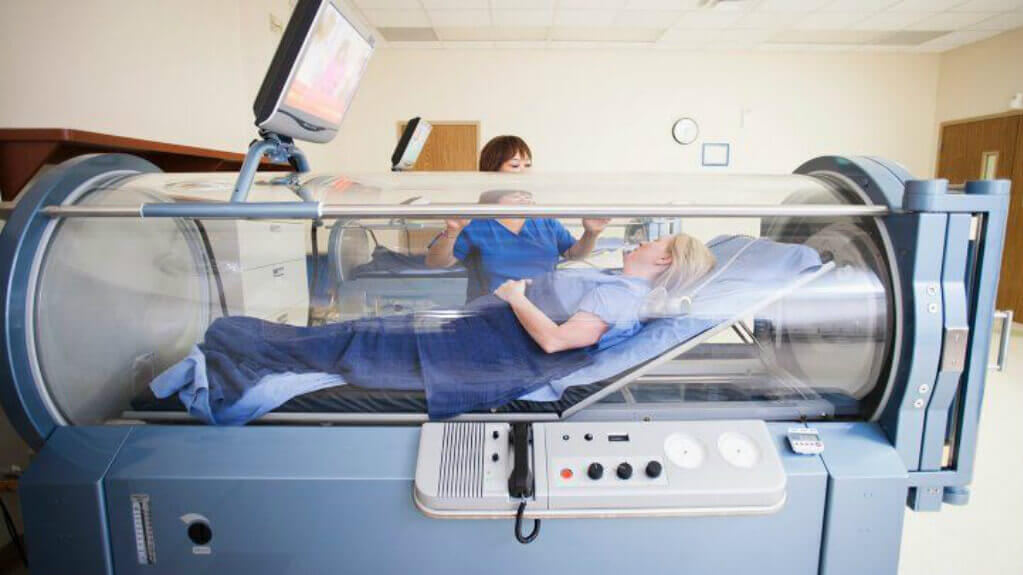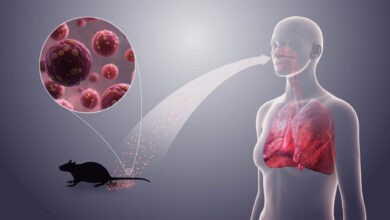Hyperbaric Therapy Gives Woman Suffering from TBI a New Lease on Life

In 2007, Hannah Anderson was involved in a near-fatal car crash which left her with traumatic brain injury (TBI) as well as many other physical afflictions. A resident of Leeds, North Dakota, Anderson had to re-learn how to walk, talk, and eat, all from scratch. The accident had left her heavily dependent and unable to perform the basic functions of life.
She recovered some of her faculties after prolonged treatment at the Gillette Children’s Hospital in St. Paul, which lasted for more than three months. This was followed by extensive therapy sessions at the Devils Lake facility close to her home.
All of these interventions helped her recover to a certain degree. However, she was still plagued by brain fog, migraine headaches, short term memory loss, insomnia, and chronic exhaustion. All of these health issues continued to be a part of her daily life for years to come, severely compromising the quality of her life.
It wasn’t until almost a decade later that, at the recommendation of a family friend, 27-year-old Hannah and her mother, Lisa Anderson, decided that they would give hyperbaric therapy or HBOT a chance.
The Beginning of a New Phase With Hyperbaric Therapy
For a stretch of five days, Hannah underwent two sessions of hyperbaric oxygen therapy per day, under the care of the doctors. The treatment was expensive and according to the Andersons, they were given no guarantees about recovery when they first arrived at the clinic.
However, as soon as the therapy sessions began, both Hannah and her mother noticed that something was different and according to both of them, what happened next was nothing short of a miracle. Halfway through the five-day treatment plan, Hannah Anderson noticed that her ‘brain fog’ lifted, giving her back the focus, concentration, and clarity of thought that she had lost over a decade ago due to the accident.
The effects of hyperbaric therapy, however, went much further than that. Hannah experienced a dramatic decrease in the frequency and intensity of her migraines and headaches. After five days of HBOT sessions, they almost disappeared. Moreover, her insomnia is now under control and she is also sleeping better than she had in nearly 11 years. Anderson feels more energetic, alert, and less anxious than she had been before she started undergoing the hyperbaric therapy sessions.
For her, HBOT proved to be nothing short of a miracle cure, giving her back the life that she had lost after the accident in 2007. Her mother, too, agreed with this assessment and said she could barely believe the improvement she’d noticed in her daughter.
“I feel more normal than I ever have in my life,” Hannah Anderson said.
She is currently working at the Minnewaukan School as a paraprofessional. Hannah’s short term memory has also gotten better with time, with the help of hyperbaric therapy, as a result of which she can now perform her tasks at work easily and without much inconvenience. After years, Hannah can finally have an independent life as well as an existence free of pain and daily suffering.
An Overview of Hyperbaric Therapy
Hyperbaric therapy played a pivotal role in Hannah Anderson’s life, giving her back her long-lost health and freedom. It has helped many others in a similar way. In recent years, medical professionals have been prescribing hyperbaric oxygen therapy as an alternative treatment option for a number of health issues, including autism, traumatic brain injury, and non-healing diabetic wounds.
HBOT is a medical procedure that requires the patient to breathe in 100 per cent pure oxygen in a high-pressure environment. A hyperbaric chamber is typically used for this purpose. After the patient enters this chamber, pure oxygen is administered to him or her at heightened atmospheric pressure levels, which ensures that the oxygen dissolves quickly into the bodily fluids of the patient.
This oxygen is then carried to the injured or damaged parts of the body and the brain by the plasma, spinal fluid, etc. Hence, even parts of the body where the flow of blood is restricted would receive sufficient oxygen after a hyperbaric therapy session. The increased supply of oxygen in the body is known to provide incredible health benefits.
Hyperbaric therapy can help individuals such as Hannah who are suffering from traumatic brain injury (TBI) because it suppresses inflammation, increases tissue oxygenation, decreases apoptosis, promotes neurogenesis and angiogenesis, and reduces ICP elevation.
TBI causes behavioural, communicative, and cognitive disabilities in sufferers, and HBOT improves both neurobiological and behavioural outcomes in patients living with chronic TBI. In clinical trials, hyperbaric therapy improved neuropsychological as well as sensorimotor functions in TBI patients.
In Conclusion
Hannah Anderson got a new lease on life thanks to hyperbaric therapy. However, her case is anything but unique. Every year, thousands of patients are treated with HBOT sessions and see remarkable improvements. For the best results, one should choose a reputed hyperbaric clinic in order to get the best possible treatment under expert supervision.



